Patterns Chapter Notes | Mathematics Class 4 ICSE PDF Download
| Table of contents |

|
| Introduction |

|
| Repeating Patterns |

|
| Number Patterns |

|
| Shape Patterns |

|
| Growing and Reducing Patterns |

|
Introduction
Patterns are like puzzles that repeat in a special way, making our world colorful and organized! From the designs on your favorite dress to the numbers in a sequence, patterns are everywhere. In this chapter, we will explore how shapes and numbers follow rules to create repeating, growing, or reducing patterns. Get ready to discover the magic of patterns and learn how to predict what comes next!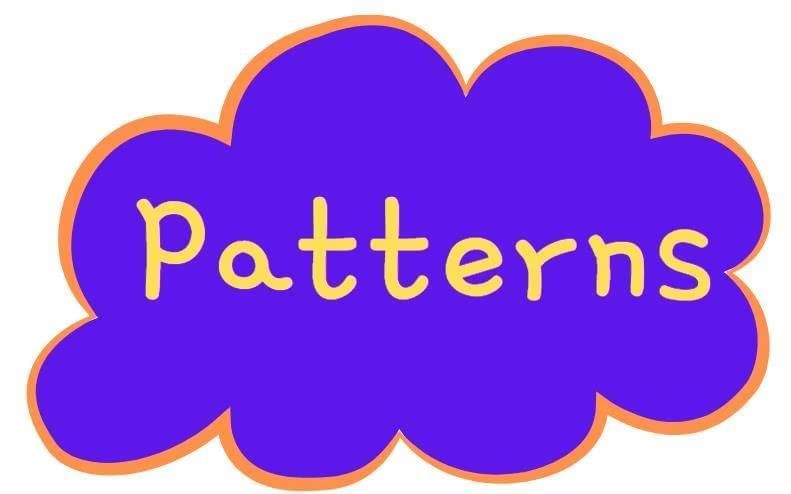
Repeating Patterns
- Repeating patterns are sequences where a specific unit repeats over and over.
- This unit is called the unit of repeat, and it stays the same throughout the pattern.
- These patterns can be made of shapes, numbers, or letters.
- To identify a repeating pattern, look for a fixed unit that repeats without changing.
- Example: In a sequence of shapes
 triangle, circle, inverted triangle, triangle, circle, inverted triangle,
triangle, circle, inverted triangle, triangle, circle, inverted triangle, - the unit of repeat is "triangle, circle, inverted triangle." This repeats, so it is a repeating pattern.
Number Patterns
- Number patterns are sequences of numbers arranged in a specific order based on a rule.
- These patterns can involve addition, subtraction, multiplication, or division to predict the next number.
- To find the pattern, look at how numbers change from one to the next.
- Some patterns may follow more than one rule in a single sequence.
- Example:Find the missing number?
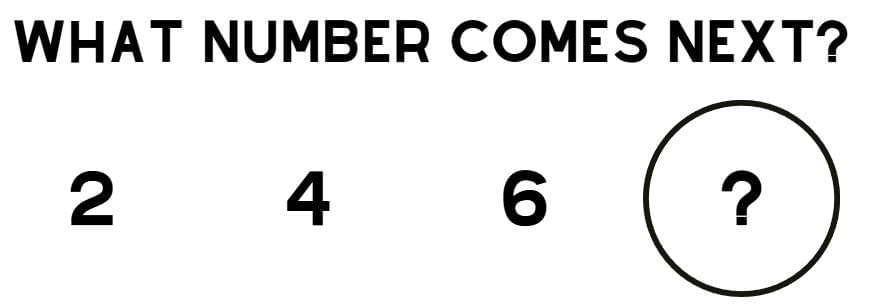
The numbers are 2, 4, 6. There is a difference of 2 between these. So the next number is 8.

- Example: In the sequence 2, 6, 7, 21, 22,
 the pattern is to multiply by 3 and add 1. Start with 2: 2 × 3 = 6, 6 + 1 = 7; 7 × 3 = 21, 21 + 1 = 22. This forms a pattern of ×3, +1.
the pattern is to multiply by 3 and add 1. Start with 2: 2 × 3 = 6, 6 + 1 = 7; 7 × 3 = 21, 21 + 1 = 22. This forms a pattern of ×3, +1.
Shape Patterns
- Shape patterns involve arranging shapes in a specific order based on a rule.
- The pattern can include one type of shape or many different shapes.
- To identify the rule, compare the first few shapes in the sequence.
- Shapes can repeat, grow, or reduce according to the rule.
- Example: In a pattern like star, heart, star and heart, what is the next shape?

The next shape is a star because the rule alternates between star and heart.

- Example: In a shape pattern numbered as 11222, 11222, the sequence repeats with one shape (1) followed by two shapes (2). The rule is to repeat this unit of shapes.
Growing and Reducing Patterns
- Growing patterns increase by adding one or more elements (shapes or numbers) repeatedly.
- Reducing patterns decrease by removing one or more elements repeatedly.
- These patterns may not have a fixed unit of repeat, unlike repeating patterns.
- Example: A pattern of leaves increases by 1 leaf from left to right (growing) or decreases by 1 leaf from right to left (reducing).
Rules to Extend a Growing or Reducing Pattern
On a number line: Use skip counting to extend patterns. For growing patterns, skip count forward; for reducing patterns, skip count backward.
Example: On a number line starting at 5, skip count by 10 forward to get a growing pattern: 5, 15, 25, 35. For a reducing pattern starting at 65, skip count by 10 backward: 65, 55, 45, 35
Use of hundreds chart:
- Left to right: Numbers increase by 1.
- Right to left: Numbers decrease by 1.
- Top to bottom: Numbers increase by 10.
- Bottom to top: Numbers decrease by 10.
- Diagonally left to right: Numbers increase by 11.
- Diagonally right to left: Numbers increase by 9.
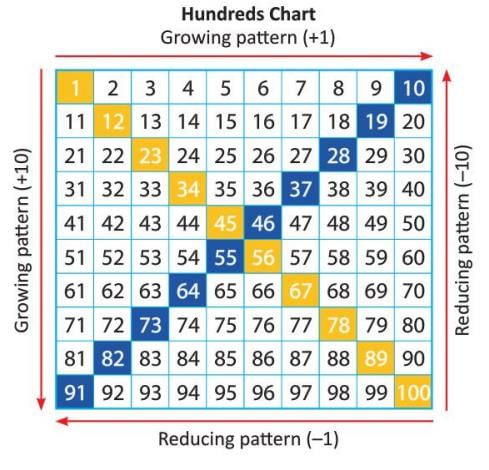
Using pictures:

Pictures, like leaves, can show growing patterns by adding elements or reducing patterns by removing elements.
Growing Number Pattern
- Growing number patterns increase by adding a new number or element to the sequence.
- The rule can involve adding or multiplying a specific number each time.
- Identify the rule by checking how each number changes from the previous one.
- Example: In the sequence 24, 30, 36, 42, 48, 54, the rule is to add 6 each time. So, 54 + 6 = 60 is the next number.
Number Towers
- Number towers arrange numbers in a pyramid shape, where numbers in lower blocks are added to get the number in the block above.
- The rule is to add the two numbers in the bottom blocks to get the number in the block directly above them.
- Continue this process for each level of the tower.
- Example: In a number tower with 5 and 7 at the bottom, 5 + 7 = 12 (next level), then 12 + 16 = 28 (top level).
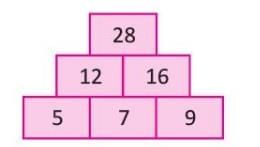
Number Patterns with Addition
- These patterns involve adding consecutive numbers to get a sum that follows a rule.
- The sum may increase by a fixed amount each time as the numbers shift.
- Identify the pattern by observing how the sum changes with each unit.
- Example: In the pattern 1 + 2 + 3 = 6, 2 + 3 + 4 = 9, 3 + 4 + 5 = 12, the sum increases by 3 each time as each number in the unit increases by 1.
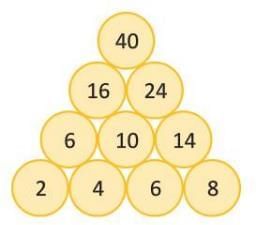
Reducing Number Pattern
- Reducing number patterns decrease by subtracting or dividing a number from the previous one.
- The rule can involve subtracting a fixed number or dividing by a constant.
- Check the difference or division between consecutive numbers to find the rule.
- Example: In the sequence 95, 90, 85, 80, 75, the rule is to subtract 5 each time. So, 75 - 5 = 70 is the next number.

Growing Shape Pattern
- Growing shape patterns increase by adding a new shape or unit to the existing pattern.
- The rule involves adding a specific shape or number of shapes each time.
- Identify the rule by observing how the number or type of shapes increases.
- Example: In a pattern of squares: 1 square, 2 squares, 3 squares, the rule is to add one square each time, like 12, 122, 1222.

Reducing Shape Pattern
- Reducing shape patterns decrease by removing a shape or unit from the existing pattern.
- The rule involves subtracting a specific number of shapes each time.
- Observe how the number of shapes decreases to find the rule.
- Example: In a pattern starting with 10 blocks, the rule is to subtract 2 blocks each time, resulting in 10, 8, 6, 4 blocks.

|
98 docs|14 tests
|
FAQs on Patterns Chapter Notes - Mathematics Class 4 ICSE
| 1. What are repeating patterns, and how can I identify them? |  |
| 2. How do number patterns work in mathematics? |  |
| 3. What are shape patterns, and can you give an example? |  |
| 4. What are growing and reducing patterns? |  |
| 5. How can I create my own patterns for practice? |  |



















